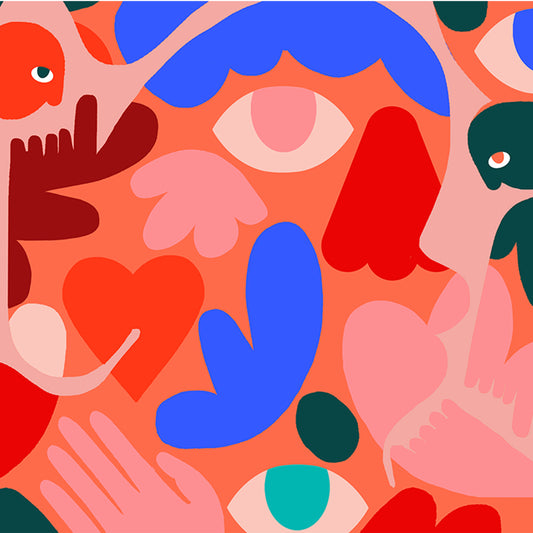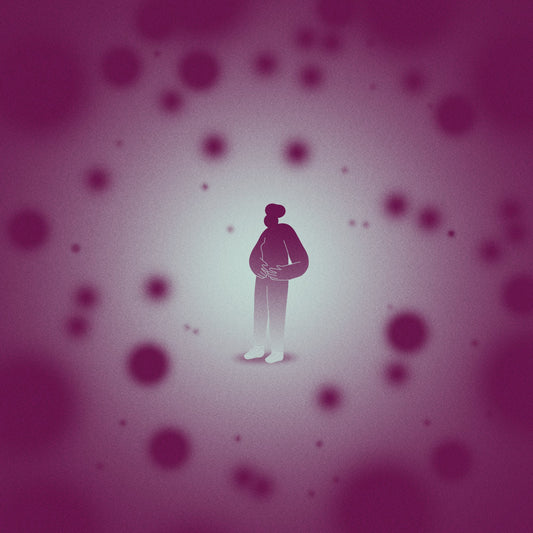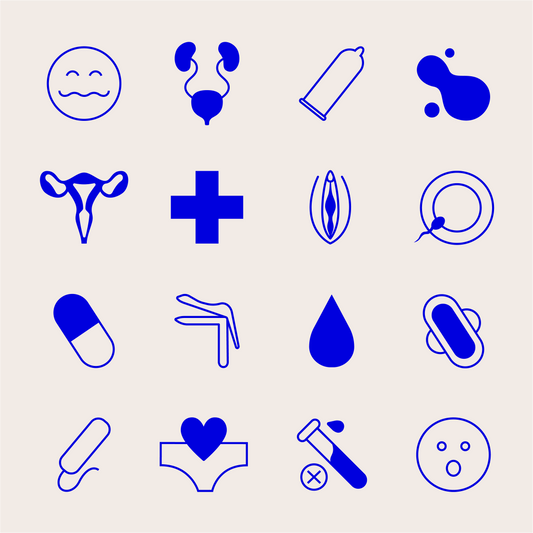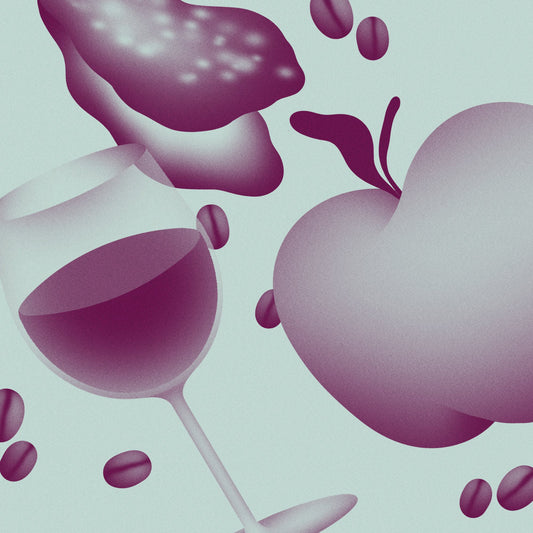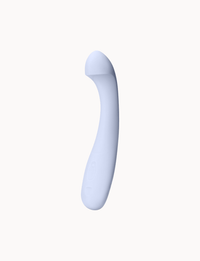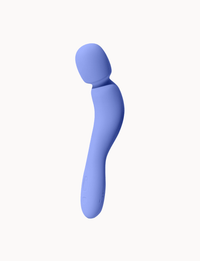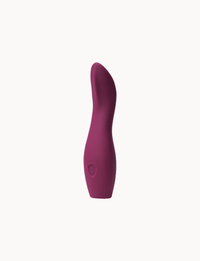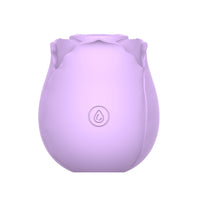Alexandra Fine, Credentialed Sexologist, M. Psych | Written by Dame
Hormones | Sex Hormones | Androgens | Estrogens | Progesterone | Sex Hormones and Birth Control | The Bottom Line
Every adult knows at least a little about testosterone and estrogen.
Testosterone? It’s what makes “a man a man” – without enough of it, they have trouble in the bedroom and need those testosterone supplements advertised just about everywhere. Right?
Estrogen? It’s what controls the menstrual cycle, which is why it’s in birth control pills. Right?
In addition, they’re the two sex hormones in the human body – the ones that determine our sex at birth. Right?
Well, sort of. But that’s a very incomplete summary, and there’s a whole lot more to the story of human sex hormones.
These hormones don’t just help determine our assigned sex and affect our sexual performance and sexual health. They also play major roles in our physical and mental well-being.
And while we’re dealing with reality:
- Vulva and penis owners each have testosterone and estrogen in their bodies.
- Testosterone and estrogen aren’t the only sex hormones in the body.
- For most people, low hormone levels aren’t a medical issue that needs immediate treatment. Our hormone levels vary throughout our lives – and often, throughout the month.
That’s just for starters – and hopefully, it’s intriguing enough to make you want to learn more.
If so, keep reading, and we’ll start at the beginning.
What Are Hormones?
The body’s endocrine system produces a wide range of chemical messengers, or neurotransmitters, which are called hormones. They travel through the bloodstream, delivering signals to organs and tissues that regulate nearly every important bodily function. Our breathing and energy production, our appetite and growth, and our mood and physical health are all dependent on hormone production.
Our sexual development and function is controlled by hormones, too.
Hormones are produced by nearly a dozen different glands in our body. The hypothalamus (a part of the brain) acts something like a head coach, using information provided by the nervous system and telling other glands when to produce specific hormones.
For example, hormones produced by the thyroid gland control the body’s metabolism, hormones from the pituitary gland control growth, and hormones made by the pancreas control digestion and blood sugar (through release of the hormone insulin). That’s only a small part of the picture, but it gives you the general idea.
We haven’t yet mentioned two other important glands, the ovaries and the testes. Along with the cortex of the adrenal glands, they release hormones that control our sexual development, sexual function and many of the physical characteristics that are associated with our assigned-at-birth sex.
“Ah,” we hear you say. “We’ve finally gotten to testosterone and estrogen.”
True. But we have more sex hormones to discuss than just the two that everyone’s familiar with.
What Are Sex Hormones?
There are three overall classes of sex hormones: androgens, estrogens and progestogens. They are synthesized from cholesterol, and sometimes called steroid hormones or sex steroids. (They’re also referred to as ligands, because of their molecular structure.) These are all endogenous hormones, meaning they’re produced inside the body.
All three are also commonly referred to as reproductive hormones, because – as you’d guess – they play a major role in the reproductive process. However, sex hormones are present in people of both assigned sexes throughout their life cycles, even before birth.
We learn in school that chromosomes determine whether a fetus becomes “male” or “female.” That’s true, but sex hormones are involved as well; so-called sex differentiation depends, in part, on the activity of androgens and other hormones during fetal development. And there’s evidence that “sex differences” in the brain (primarily growth and dendritic neuron development) are sorted out during early fetal brain development, thanks to the presence of steroid hormones.
Once a child is born, the importance of these hormones isn’t diminished; there’s research showing that levels of sex hormones in infancy may predict a child’s language development as they grow.
The physical characteristics associated with a person’s assigned sex (and they’re usually different characteristics, because of sexual dimorphism) develop during puberty, of course. That’s largely due to the activation and increased secretion of reproductive hormones. The growth of body hair, breast development, ovulation and the ability to produce sperm, among other features, are all due to the influence of a person’s sex hormones. Sufficient production of sex hormones is also essential for a healthy pregnancy.
There’s much more to the story. Sex hormones play a major role in sexual desire and arousal. They help with modulation of inflammatory and immune responses (because of steroid receptors in the innate and adaptive immune systems). And sex hormone deficiencies have been linked to physical and mental issues ranging from cancer to depression. Natural decreases in sex hormone production that occur as people age, particularly after menopause, often lead to less-serious health concerns.
Some descriptions of the endocrine system also list pregnenolone and DHEA (dehydroepiandrosterone) in their own categories. They’re precursor hormones needed for the synthesis of the other sex hormones; they’re important because low levels of either one usually leads to other types of hormone deficiencies. Low levels of DHEA can also be a factor in a number of medical problems like Alzheimer’s disease, HIV/AIDS and heart disease.
For the purposes of this discussion, though, we’ll focus on the big three.
What Are Androgens?
The androgen most people are familiar with is testosterone, leading to the common assumption that androgens are “male hormones.” That’s really not the case, although testosterone does stimulate the development of physical characteristics associated with those assigned male at birth. Another androgen is DHT (dihydrotestosterone); it’s actually testosterone that’s been converted by the body to a more “potent” form, which can better deliver its messages to the body’s androgen receptors.
And it’s not just “males” whose bodies produce androgens. “Females” produce them too, and androgens play a part in their ovarian function, sexual desire and arousal.
Androgen Production and Function
Androgens are mostly produced in two different glands: the adrenal glands and the gonads (the testes for penis-havers, the ovaries for vulva-havers). That’s why they’re sometimes called gonadal hormones. (As are estrogens, which we’ll get to shortly.) Smaller amounts of testosterone are produced in fat and muscle tissue as well. A small amount of naturally-produced testosterone is converted to estradiol, which is a form of estrogen
Testosterone plays a number of important roles in penis-havers. It governs the development of their sex organs, facial and public hair, voice timber, and muscle and bone size and strength. It also enables and regulates sperm production and libido.
The body has a complicated method of controlling the production of androgens. Continuous signaling between the hypothalamus, pituitary gland and gonads, with the help of other hormones called gonadotrophin-releasing hormones and luteinizing hormones, provides a feedback loop to optimize testosterone and DHT production.
Abnormal Androgen Levels
Contrary to popular belief, it’s extremely rare that those with penises actually have “too much” testosterone or DHT in their body. Displays of “excessive masculinity” like road rage, bar fights and hypersexuality, and the prevalence of other symptoms like acne and rapid growth of muscle mass, aren’t commonly associated with naturally-high levels of testosterone. They’re usually caused instead by the use of anabolic steroids, or other artificially-introduced hormones or substances.
However, unusually-high levels of androgens can have an effect on those with vulvas.
The ovaries require a proper balance of androgens and estrogens in order to function normally. And polycystic ovary syndrome, a relatively-common medical condition among those who are pre-menopausal, can cause excess testosterone production and lead to issues like decreased breast size, hair growth on the face and other areas, male-pattern baldness and a deeper voice. Those issues are often treated with steroids, or forms of hormonal therapy.
A bigger concern for penis-havers is low testosterone.
Normally, their testosterone production declines at a rate of about 1-2% per year, starting around age 30. That’s why those with penises often experience hair loss, a loss of muscle mass and a lower sex drive later in life. No medical treatment is prescribed in those cases, for the most part, because of the serious side effects associated with testosterone therapy. And there’s no evidence that over-the-counter “testosterone boosters” can make much of a difference.
There are, however, reasons why younger people may have low testosterone levels. Injuries or diseases affecting the testes, pituitary gland or hypothalamus, tumors, some medications like steroids or opioids, and cancer or radiation treatment can all cause a drop in testosterone (as can removal of the ovaries in vulva-havers). In those cases, testosterone replacement therapy may be prescribed.
One final note: hormonal birth control often affects the levels of androgens – but some types lower the body’s androgen levels, while others increase them. Consulting a health care provider is recommended before starting birth control, or if it seems to be causing hormonal issues. We’ll discuss hormonal contraceptives in more detail later on.
What Are Estrogens?
Everyone’s familiar, to some degree, with estrogens. But when they identify them as the “female sex hormones,” or the “menstruation hormones,” they’re missing the big picture.
First of all, everyone’s body produces estrogens, including those with penises and those who are postmenopausal. The hormones aren’t just produced in the ovaries (before menopause), but also in the adrenal glands, by other tissues, and in penis owners’ testes.
Second, the different forms of estrogen are responsible for much more than regulating the menstrual cycle and creating the body characteristics associated with cis females.
These hormones have a major effect on sexual function and libido in vulva-havers, and they are somewhat involved in everything from skin and hair growth, to cardiovascular health and brain function. And in penis-havers, they play a role in sperm production, erectile function and sex drive.
Types of Estrogen
There are four different forms of estrogen (or as they spell it in Britain, oestrogen) produced by the body, with two playing major roles.
Estradiol (E2, or 17ß-estradiol) is the most active form. It binds most strongly to the body’s estrogen receptors, and is primarily responsible for regulation of the menstrual cycle. Estriol (E3) is most important during pregnancy, because it helps with fetal development and delivery. It’s produced primarily in the placenta.
Estrone (E1) and estetrol (E4) are “weaker” estrogens; estrone is mostly present after menopause, and estetrol is produced by a developing fetus.
When most people simply refer to “estrogen,” they’re really talking about estradiol. For the sake of convenience, we’ll do the same.
Estrogen and the Menstrual Cycle
Despite its other responsibilities, estrogen has its biggest effect on vulva-havers’ monthly cycle.
Follicular Phase
During the first half of a period, or the follicular phase, follicles in the ovaries produce greater and greater amounts of estrogen. It helps thicken the lining in the uturus and endometrium, and eventually, it causes the brain to release other hormones that trigger release of an egg, luteinizing hormone and follicle-stimulating hormone. Increased estrogen levels are also what cause an increased sex drive in many people just before ovulation.
Luteal Phase
During the second half of the cycle, or the luteal phase, the egg sac (known as the follicle) bursts so the egg can be released. At the same time, the body forms a mass of cells called the corpus luteum; it’s responsible for producing more estrogen, plus another hormone known as progesterone that’s necessary to support pregnancy. (More about progesterone in a bit.)
If the egg isn’t fertilized, the corpus luteum stops hormone production and the body’s levels of estrogen and progesterone fall significantly. That essentially causes the symptoms of PMS.
Menopause
We’ve mentioned that estrogen levels fall during perimenopause and drop dramatically after menopause, and the reason is simple. There are few follicles left on the ovaries to produce substantial amounts of estrogen. As a result, vulva-havers are likely to feel side effects of low estrogen levels, like hot flashes and vaginal dryness. Those who are postmenopausal are often prescribed estrogen pills to treat those issues.
Estrogen and Birth Control
There are important factors to understand when it comes to estrogen and hormonal birth control.
However, we’re going to put them on hold until we discuss the third type of sex hormones, progesterone – because hormonal contraception involves a delicate dance between the two types of hormones and the body.
Abnormal Estrogen Levels
Some vulva-havers (who probably do a lot of research online) become concerned about low estrogen levels when they experience low libido, hot flashes, insomnia, mood swings or menstrual problems, or if they have unexplained hair loss, weight gain, inflammatory problems or migraines. They may also blame high estrogen levels for issues like tender breasts or bloating.
More often than not, those symptoms are caused by other factors, or by normal monthly fluctuations in sex hormone levels. However, it’s possible for their estrogen levels to decline below normal levels, due to factors like pituitary gland or kidney problems or diseases, too much exercise, or eating disorders. Some medications, obesity, tumors or liver disease can also cause abnormally high estrogen levels.
Pre-menopausal vulva-havers with low estrogen are treated the same way that post-menopausal ones are, with estrogen therapy. Those with levels that are too high are normally told to change their medications or take different ones; in rare cases, removal of the ovaries is suggested. Naturally, any underlying causes will be treated separately.
Those with penises may occasionally have low or high estrogen levels as well. High estrogen can cause erectile dysfunction, infertility or even gynecomastia (enlarged breasts); dietary changes or medication are the usual treatments. Low estrogen levels in penis-havers can lead to a lower libido, weight gain or bone loss; hormone treatment is often prescribed to treat the issue.
What Is Progesterone?
Here’s the final type of sex hormone. It’s the most important member of a class known as progestogens, and it’s also essential to human sexual function.
We’ve mentioned the source of most of the body’s progesterone: the corpus luteum that forms after ovulation. That’s why the body’s progesterone levels are naturally high during the second half of the menstrual cycle and low during the first half. Lesser amounts of progesterone are produced in the adrenal glands and by the placenta during pregnancy.
Progesterone is most important during ovulation and pregnancy, which is why it’s often referred to as the “pregnancy hormone.”
After ovulation, progesterone stops the thickening of the endometrium induced by estrogen, while preparing it for the possible implantation and fertilization of an egg. If that doesn’t happen, the hormone works with progesterone receptors to prevent ovulation during the second half of the cycle.
If an egg is implanted, progesterone production continues and increases during the first trimester. The hormone prevents menstruation and supports the pregnancy, helping the womb expand and nurturing the fetus. It also supports the immune system, keeps the uterus relaxed, and prepares the mammary glands for lactation.
Low progesterone levels can generally cause headaches, mood changes and menstrual cycle issues. During pregnancy, low progesterone can leave estrogen as the body’s “dominant” hormone and cause more serious health issues for both mother and fetus. Progesterone supplements or hormone treatments can ease or solve the problems.
Levels that are too high, on the other hand, are unlikely to cause health problems, but they may indicate underlying issues like adrenal gland diseases or ovarian cancer.
What about penis-havers? The small amount of progesterone in their bodies helps with the production of sperm, and plays roles in building bone mass and regulating blood sugar. It’s also a precursor for the production of testosterone, so low levels of progesterone can correlate with low libido, sexual dysfunction and prostate issues, as well as fatigue, weight gain and hair loss. It can be treated in the same way as it is in vulva owners.
Sex Hormones and Birth Control
It should be obvious by now why hormonal birth control methods like pills, patches, implants, rings and injections are able to interrupt the normal human menstrual cycle and prevent pregnancy.
Contraceptive pills and devices contain the same sex hormones that are responsible for regulating those functions – but they interrupt the monthly cycle by creating hormone imbalances, which stop ovulation from occurring.
Hormonal contraception methods like the ring and the patch, and most forms of birth control pills, contain both estrogen and progestin (a synthetic version of progesterone). So-called mini-pills, injections and implants contain only progestin.
Artificially increasing estrogen and progesterone levels in the body can each make ovulation more difficult, but inducing high estrogen levels is the best way to prevent the release of an egg. Progestins approach the task in a different way; they thicken mucus in the cervix and thins the endometrium (uterine lining), making it unlikely that sperm can reach or attach to the egg.
When estrogen and progestin interact with the body’s hormone receptors their effects aren’t limited to pregnancy prevention, of course. There are other positive and negative effects of hormonal birth control as well.
Among the potential positive effects: control of menstrual issues like heavy or prolonged bleeding, pain and anemia. Contraceptive pills containing estrogen are also used at times to control acne. (Progestin, by contrast, can cause acne or other skin problems.)
On the negative side: libido may be influenced by hormonal birth control, and there’s some evidence that the increased hormone levels can cause depression in some patients. There are also studies indicating that hormonal contraception may increase the risk of breast cancer, blood clots and other cardiovascular issues, although those risks appear to be minimal for patients without adverse medical histories.
Sex Hormones: The Bottom Line
The human body depends on sex hormones like testosterone, estrogen and progesterone not only for sexual function and procreation, but for a wealth of other crucial bodily functions that begin even before birth.
Sex hormone levels vary throughout a person’s life, monthly for vulva-havers before menopause, and later in life for everyone. They can also be affected by illness, disease and medication.
When most people believe they may have a hormone imbalance, chances are good that it’s just a temporary issue caused by ovulation, it’s a natural change due to aging, or that something completely different is causing the problem.
In any event, the best course of action is to consult a primary care physician or another medical professional. They can run tests, reach a diagnosis, and make a referral to an endocrinologist if there really is a hormone imbalance to address.

